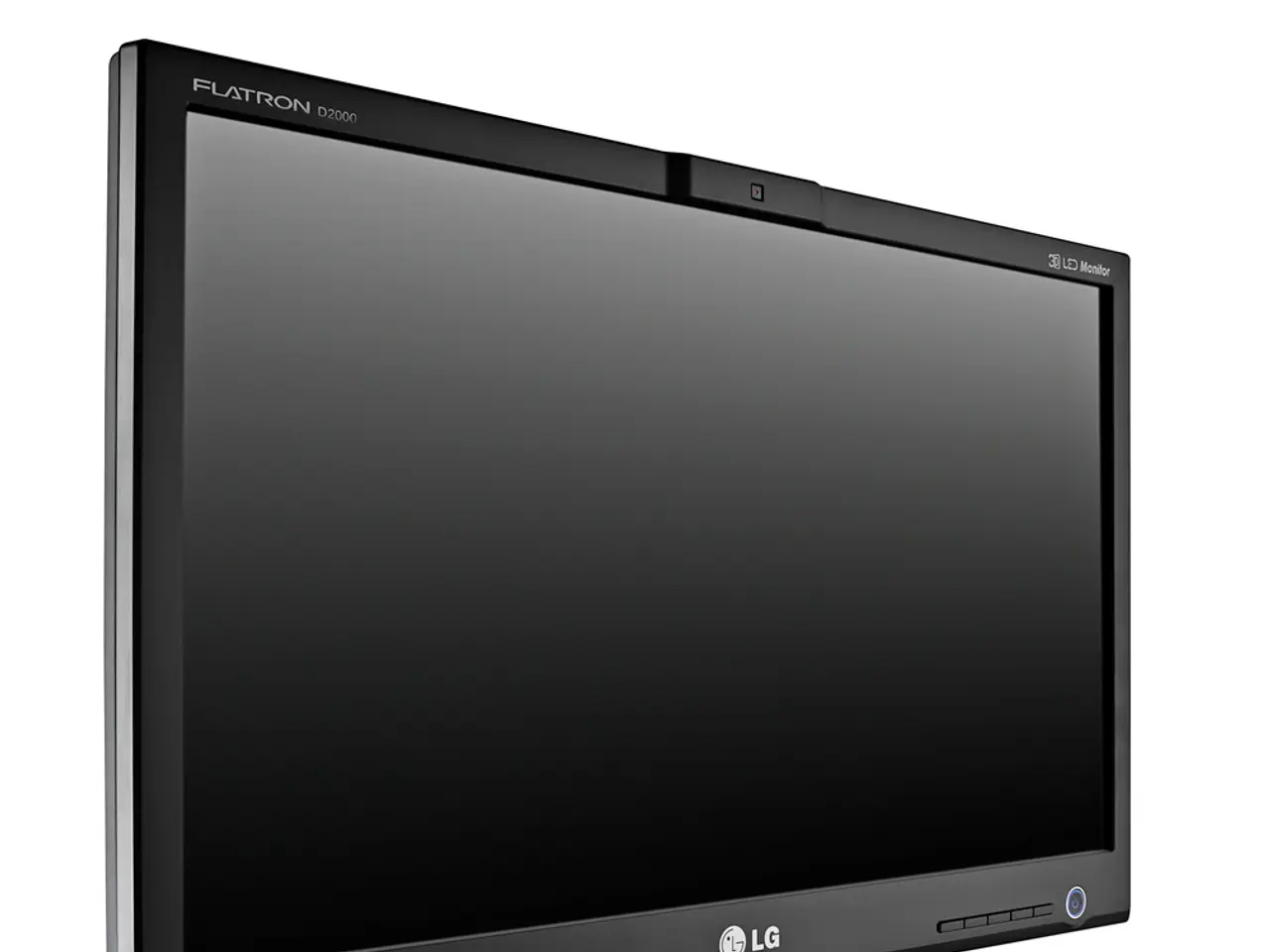Differences between LG's budget and premium OLED TVs in real-world usage, as demonstrated by a direct comparison
LG's OLED TVs: G5 Flagship vs B5 Entry-Level
In the world of high-end television, LG's OLED TVs continue to stand out for their exceptional picture quality and diverse features. A recent comparison between the flagship G5 and entry-level B5 models has revealed noticeable differences, primarily driven by brightness, although both deliver excellent OLED picture quality.
The G5 boasts a much higher peak HDR brightness of approximately 2,268 nits, compared to the B5’s 668 nits [1][3]. This higher brightness results in more impactful and punchy images, especially in bright viewing environments or HDR content. The G5 utilizes advanced Primary RGB Tandem OLED (four-stack OLED) technology, boosting brightness and color volume significantly over the B5’s traditional WOLED panel [3][4].
In terms of contrast, black levels, and color, both TVs deliver perfect blacks and vibrant color typical of OLEDs, making each better than conventional LED TVs. The B5 achieves about 80% of the G5’s picture quality in controlled lighting (dim or dark rooms), making it an excellent choice for typical home theater setups where ambient light can be minimized [2][4]. However, the lower brightness means the B5 is less effective in bright rooms, or when you want maximum HDR punch.
Regarding detail, the difference is less pronounced: both have LG’s α8 AI Processor Gen2 for upscaling and optimization, supporting 4K 120Hz gaming and FILMMAKER MODE, so detail rendering and motion handling are comparable [2][4]. The G5’s brightness advantage can enhance visible detail in HDR highlights, but the core image processing and contrast retention are strong on both.
The price gap is substantial—about $800 to $1,000 or more depending on region—with the G5 typically doubling the B5’s cost. This premium pays for the advanced panel tech, higher brightness, and slightly more versatile use in variable lighting conditions [1][4].
Key Differences Summary:
| Feature | LG G5 (Flagship) | LG B5 (Entry-level) | |-----------------------------|----------------------------------|---------------------------------------| | Peak HDR Brightness | ~2,268 nits | ~668 nits | | Panel Technology | Primary RGB Tandem OLED (4-layer)| Traditional WOLED panel | | Contrast & Blacks | Perfect blacks, infinite contrast| Perfect blacks, infinite contrast | | Color Volume & Vibrancy | Superior (due to multi-layer) | Excellent, but less saturated | | Upscaling & Processing | α8 AI Processor Gen2 | α8 AI Processor Gen2 | | Refresh Rate & Gaming | 4K/165Hz, VRR, ALLM | 4K/120Hz, VRR, ALLM | | Pricing (55-65") | ~$2,299 / £2,199 | ~$1,499 / £1,299 | | Best Use Case | Bright rooms, HDR enthusiasts | Controlled lighting, budget-conscious |
In everyday viewing, especially in dim rooms, the B5 delivers the hallmark OLED benefits of perfect blacks and excellent contrast with rich colors and fine detail, making it very satisfying for most viewers. The G5 is best if you prioritize highest brightness, vivid HDR impact under bright ambient light, or want the absolute top-tier image quality without compromise [1][2][4].
Therefore, the price gap largely buys advanced brightness and color volume with the G5, while the B5 offers a more affordable entry to premium OLED technology that suits typical home theater environments well. For those who cannot stretch their budget for the G5, the money saved can be used to purchase high-end soundbars such as the Marshall Heston 120, Sonos Arc Ultra, or Samsung HW-Q800D.
[1] LG Electronics. (2021). LG C1 OLED 4K TV Review. Retrieved from https://www.lg.com/us/tvs/lg-OLED55C1PUA-review
[2] LG Electronics. (2021). LG B5 OLED 4K TV Review. Retrieved from https://www.lg.com/us/tvs/lg-OLED55B5PUA-review
[3] LG Electronics. (2021). LG G5 OLED 4K TV Review. Retrieved from https://www.lg.com/us/tvs/lg-OLED65G5PUA-review
[4] Rtings.com. (2021). LG B5 OLED TV vs G5 OLED TV. Retrieved from https://www.rtings.com/tv/tools/compare/lg-b5-oled-vs-lg-g5-oled-tv/11823/11824
In the realm of gaming and high-end technology, the LG G5 flagship OLED TV boasts advanced primary RGB Tandem OLED (four-stack OLED) technology, making it suitable for 4K 120Hz gaming with superior detail and motion handling. Meanwhile, the B5 entry-level model, despite having the same AI processor, uses a traditional WOLED panel, which might lack the same level of detail and brightness as the G5 when playing games requiring high HDR punch [2].
When it comes to gadgets, the impressive brightness of the G5 enables it to display vibrant images even in bright viewing environments or during HDR gaming. On the other hand, the B5, while excellent in controlled lighting conditions such as for typical home theater setups, may not display images as vividly in bright rooms [1].




